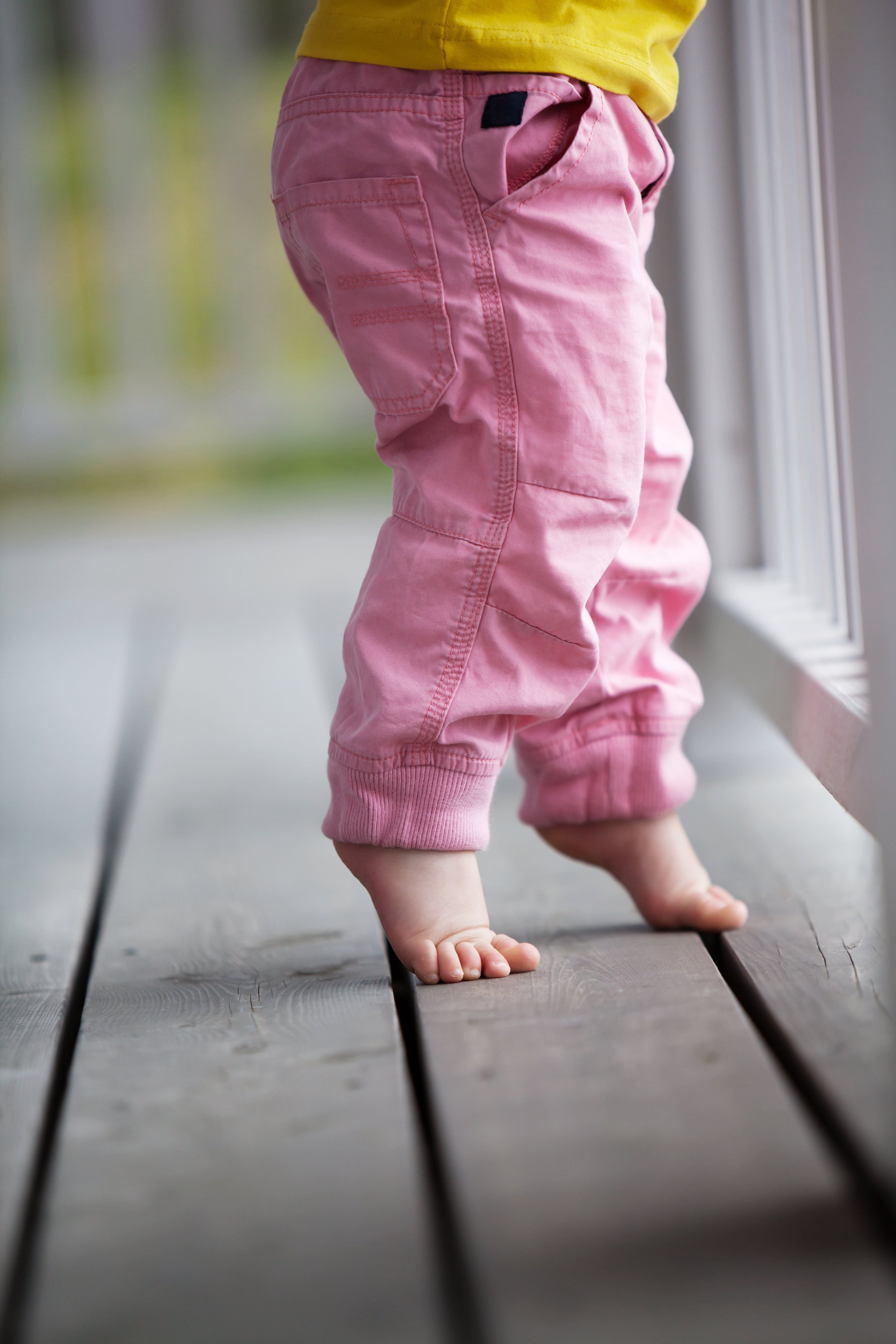Is Toe Walking Normal?
Is toe walking normal? Plus strategies to prevent and reduce toe walking
Sometimes when babies learn to walk, they have a tendency to walk on their tip-toes instead of with their feet flat on the ground. This is known as “toe walking” and there are a variety of reasons a baby, toddler, or child might walk with this pattern.
Many times, toe walking is idiopathic, meaning that there is no specific reason why it occurs. However, it is sometimes associated with an underlying diagnosis such as autism, cerebral palsy, or other neurologic conditions.
While sometimes toe walking can resolve on its own, I often find that the “wait and see” approach does not work well. Toe walking is not harmful if it occurs at a young age and if it happens occasionally, but as children grow, it can cause pain or tightness. It can also lead to difficulty with balance and coordination, along with posture abnormalities.
Here are some ways you can prevent toe walking:
1. Avoid jumpers and walkers
These devices cause babies to lean forward into the front of the device, with their feet behind them. This ultimately leads to putting weight through their toes and turning off their core muscles.
2. Work on standing play, barefoot
This allows your baby to turn on all the little muscles in their feet and ankles that can help develop the strength they need to stand with feet flat.
3. If your baby likes to stand with their tummy leaning into a surface, try to bring the surface closer to them, or their feet closer to the surface.
This will help to bring their bottom behind their feet, encouraging a “foot flat” position.
Oftentimes when a child comes to see me for physical therapy regarding toe walking, there is no specific reason, and the toe walking began around the same time that they started walking independently. In this case, there are many ways we can work to reduce the toe walking.
Here are some things that can help decrease toe walking:
1. Work on single leg balance and stability
It is almost impossible to balance on one foot while on your tiptoes. If you have your child practice standing on one foot, they will automatically bring their heel down and work the muscles required to maintain this position.
A great way to incorporate this into daily life: Have your child stand with one foot on a step stool, other foot on the floor as they brush teeth every morning and night.
2. Work on squatting
This will help bring your child’s weight back into their heels as they reach down to pick things up off of the floor.
A great way to incorporate this into daily life: Have your child help with cleaning up toys on the floor. Put the basket or bin up higher, like on the couch or table, to encourage them to squat and stand back up.
3. Work on core strength
Crawling and climbing are great ways for young kids to work on core strength. It takes a lot of abdominal strength to keep your weight back in your heels, so this will help!
4. Try not to say things like “heels down” or “off your toes” because it likely won’t work. If you want a phrase to use, try “feet in front.”
By encouraging your child to kick their foot out in front of their knees, they will have to hit their heel to the ground first.
If your child starts walking on their toes suddenly when they did not do this before, or if it seems like they are walking on their tiptoes on one side more than the other, consult with your pediatrician, as there may be an underlying cause.

